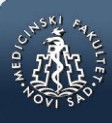md-medicaldata
Main menu:
- Naslovna/Home
- Arhiva/Archive
- Godina 2023, Broj 3
- Godina 2023, Broj 1-2
- Godina 2022, Broj 3
- Godina 2022, Broj 1-2
- Godina 2021, Broj 3-4
- Godina 2021, Broj 2
- Godina 2021, Broj 1
- Godina 2020, Broj 4
- Godina 2020, Broj 3
- Godina 2020, Broj 2
- Godina 2020, Broj 1
- Godina 2019, Broj 3
- Godina 2019, Broj 2
- Godina 2019, Broj 1
- Godina 2018, Broj 4
- Godina 2018, Broj 3
- Godina 2018, Broj 2
- Godina 2018, Broj 1
- Godina 2017, Broj 4
- Godina 2017, Broj 3
- Godina 2017, Broj 2
- Godina 2017, Broj 1
- Godina 2016, Broj 4
- Godina 2016, Broj 3
- Godina 2016, Broj 2
- Godina 2016, Broj 1
- Godina 2015, Broj 4
- Godina 2015, Broj 3
- Godina 2015, Broj 2
- Godina 2015, Broj 1
- Godina 2014, Broj 4
- Godina 2014, Broj 3
- Godina 2014, Broj 2
- Godina 2014, Broj 1
- Godina 2013, Broj 4
- Godina 2013, Broj 3
- Godina 2013, Broj 2
- Godina 2013, Broj 1
- Godina 2012, Broj 4
- Godina 2012, Broj 3
- Godina 2012, Broj 2
- Godina 2012, Broj 1
- Godina 2011, Broj 4
- Godina 2011, Broj 3
- Godina 2011, Broj 2
- Godina 2011, Broj 1
- Godina 2010, Broj 4
- Godina 2010, Broj 3
- Godina 2010, Broj 2
- Godina 2010, Broj 1
- Godina 2009, Broj 4
- Godina 2009, Broj 3
- Godina 2009, Broj 2
- Godina 2009, Broj 1
- Supplement
- Galerija/Gallery
- Dešavanja/Events
- Uputstva/Instructions
- Redakcija/Redaction
- Izdavač/Publisher
- Pretplata /Subscriptions
- Saradnja/Cooperation
- Vesti/News
- Kontakt/Contact
 Pasterovo društvo
Pasterovo društvo
- Disclosure of Potential Conflicts of Interest
- WorldMedical Association Declaration of Helsinki Ethical Principles for Medical Research Involving Human Subjects
- Committee on publication Ethics
CIP - Каталогизација у публикацији
Народна библиотека Србије, Београд
61
MD : Medical Data : medicinska revija = medical review / glavni i odgovorni urednik Dušan Lalošević. - Vol. 1, no. 1 (2009)- . - Zemun : Udruženje za kulturu povezivanja Most Art Jugoslavija ; Novi Sad : Pasterovo društvo, 2009- (Beograd : Scripta Internacional). - 30 cm
Dostupno i na: http://www.md-medicaldata.com. - Tri puta godišnje.
ISSN 1821-1585 = MD. Medical Data
COBISS.SR-ID 158558988
GRYNFELTT-LESSHAFT HERNIA– Case report
GRYNFELTT-LESSHAFT HERNIJA – Prikaz slučaja
Authors
Milan Scepanović1, Goran Milicević1, Aleksandar Jovanovski2, Bojan Nikolić2, Miroslav Mišović2, Vladica Vasiljević2
1Unilabs Røntgen Hamar, Norway
2Institute of radiology, Military Medical Academy, Serbia
• The paper was received on 03.06.2016. / Accepted on 14.06.2016.
Correspodernce to:
Milan Scepanovic
e-mail: scepan@gmail.com
Abstract
Lumbar hernias are quite uncommon as compared to all other ventral abdominal wall hernias, accounting for less than 1,5 % of the abdominal hernias with approximately only 300 cases reported in the literature so far. Lumbar hernias may be superior or inferior. The Grynfeltt-Lesshaft hernia (or superior lumbar hernia) is a rare posterolateral abdominal wall defect and a herniation of abdominal contents through the superior lumbar triangle (also known as Grynfeltt-Lesshaft’s triangle).
There are two broad aetiologies for Grynfeltt-Lesshaft hernias: congenital or acquired. Most common in patients aged between 50 and 70 years with a male predominance. Grynfeltt-Lesshaft hernia may contain a number of intra- or retro-peritoneal structures including: fat tissue, stomach, small or large bowel, mesentery, omentum, ovary, spleen or kidney. Clinically, patients can present with a variety of nonspecific symptoms, including a posterolateral mass, back pain, bowel obstruction (if contents contain bowel), or urinary obstruction (if contents are kidney/ureter). Given their rarity and their nonspecific presentation, lumbar hernias are an easy diagnosis to overlook. Even though the diagnosis is clinical, CT or MR imaging study is broadly recommended. Surgery is typically recommended to repair the defect and prevent complications, including strangulated hernia, however, the optimal technique should be selected on an individual basis.
Key words
Superior lumbar, Grynfeltt-Lesshaft hernia, rare, MR scan
References
- Moreno-Egea A, Baena EG, Calle MC, Martínez JT, Albasini JA. Controversies in the Current Management of Lumbar Hernias.Arch Surg. 2007;142(1):82-882.
- Grynfeltt J. Quelques mots sur la hernie lombaire. Montpellier Medical. 1886;16:323
- Swartz W.T. Lumbar hernia. In: Nyhus L.M., Condon R.E., editors. Hernia. 2nd ed. Lippincott; Philadelphia: 1978. pp. 409–426
- Alves RT, Silva VA, Corrêa RM, Haygert JP. Grynfeltt-Lesshaft hernia. Annals of Gastroenterology. 2012;25(1):64..
- Baker ME, Weinerth JL, Andriani RT et al. Lumbar hernia: diagnosis by CT. AJR Am J Roentgenol. 1987;148 (3): 565-7.
- Armstrong O, Hamel A, Grignon B, et al. Lumbar hernia: anatomical basis and clinical aspects. Surg Radiol Anat. 2008;30:533–610
- Zhou X, Nve JO, Chen G. Lumbar hernia: clinical analysis of 11 cases. Hernia. 2004;8:260–263
- Le NeeL, J. C., et al. Lumbar hernias in adults. Apropos of 4 cases and review of the literature. Journal de chirurgie, 1993;130(10): 397-402.
 Medicinski fakultet
Medicinski fakultet